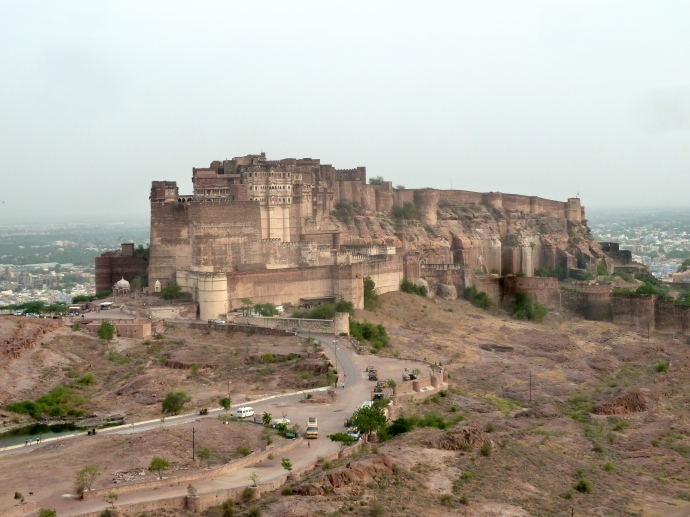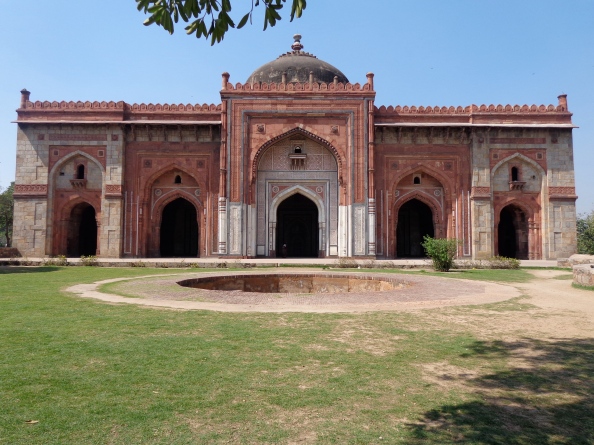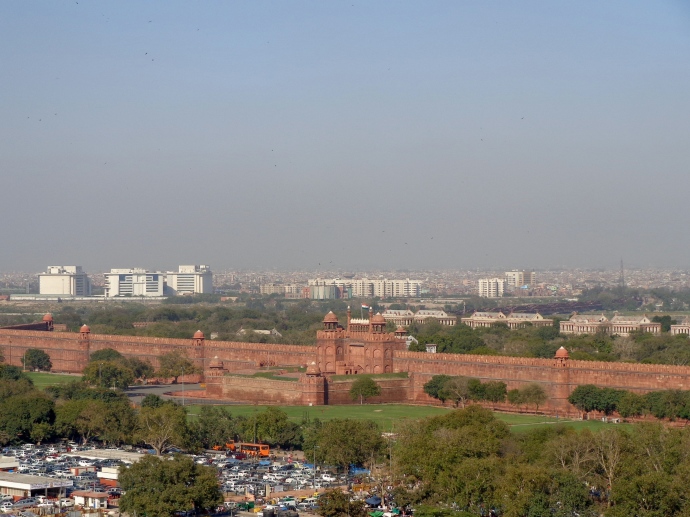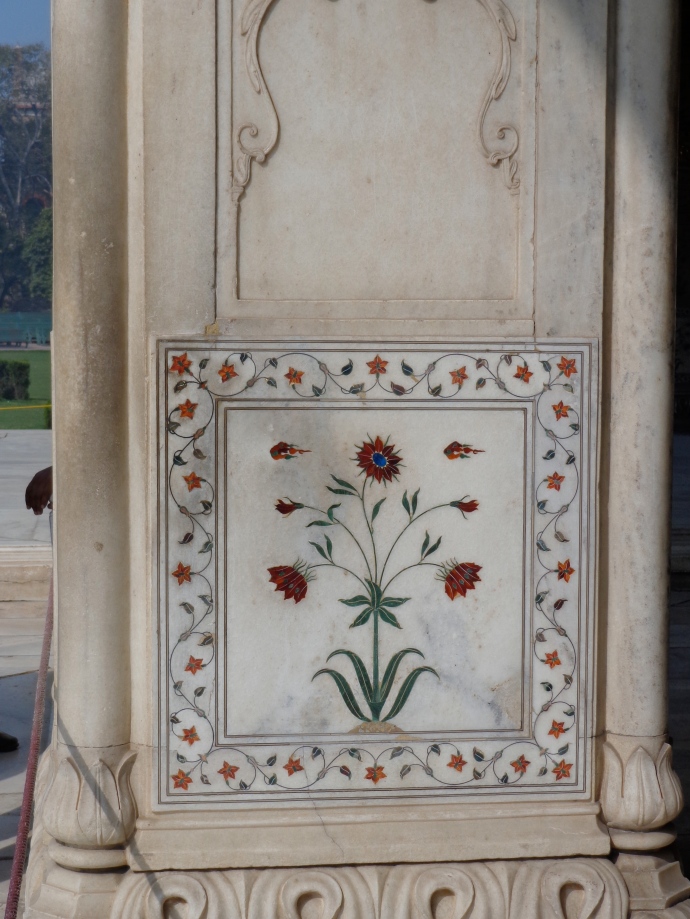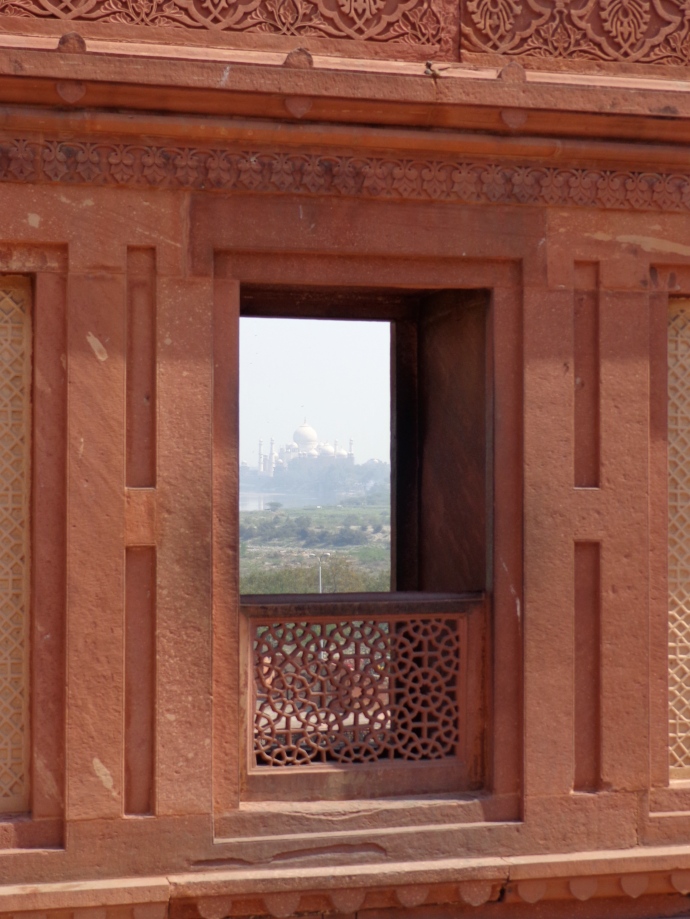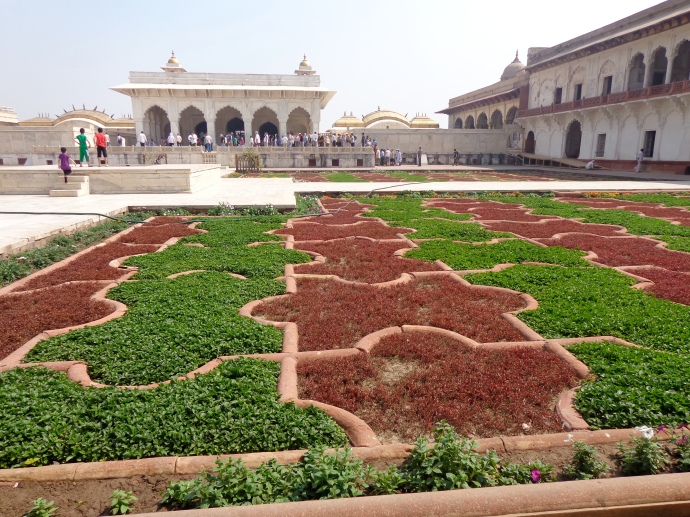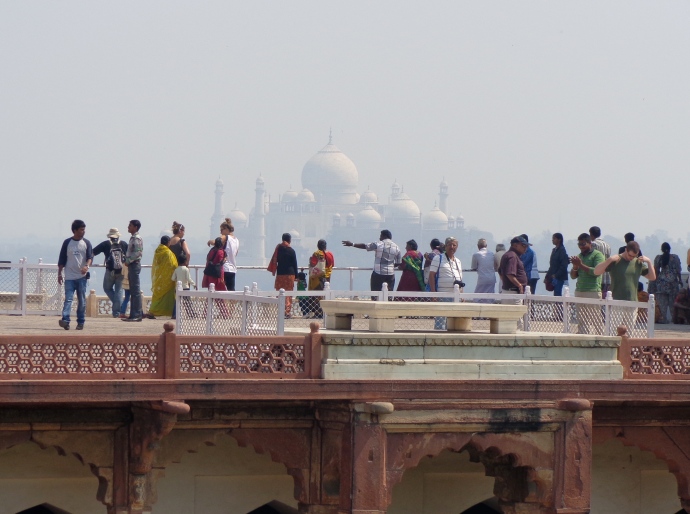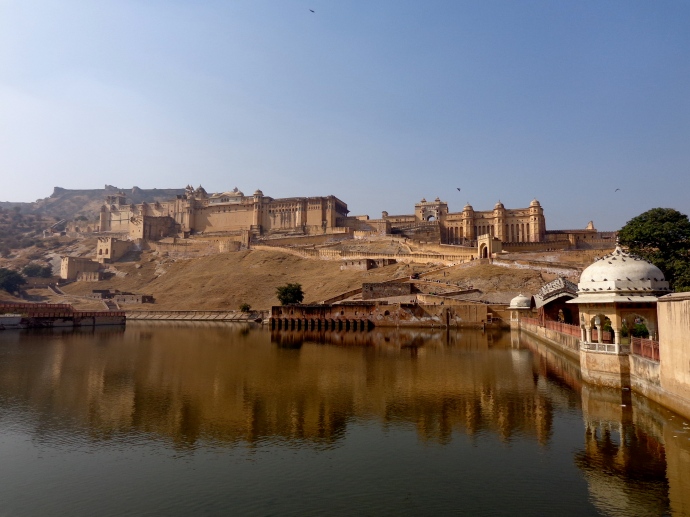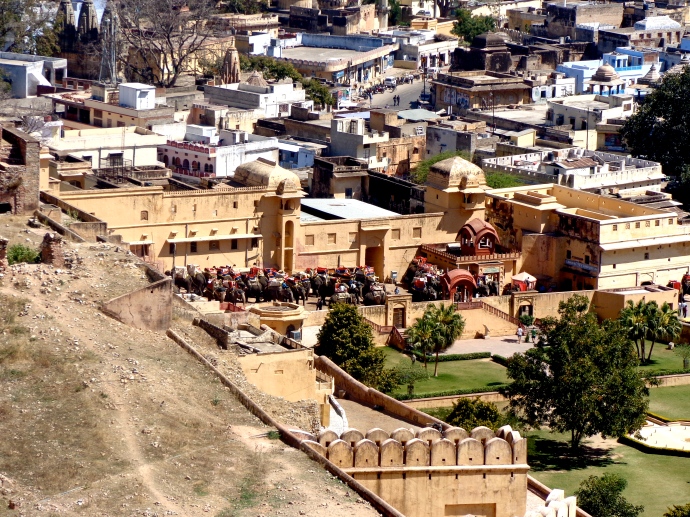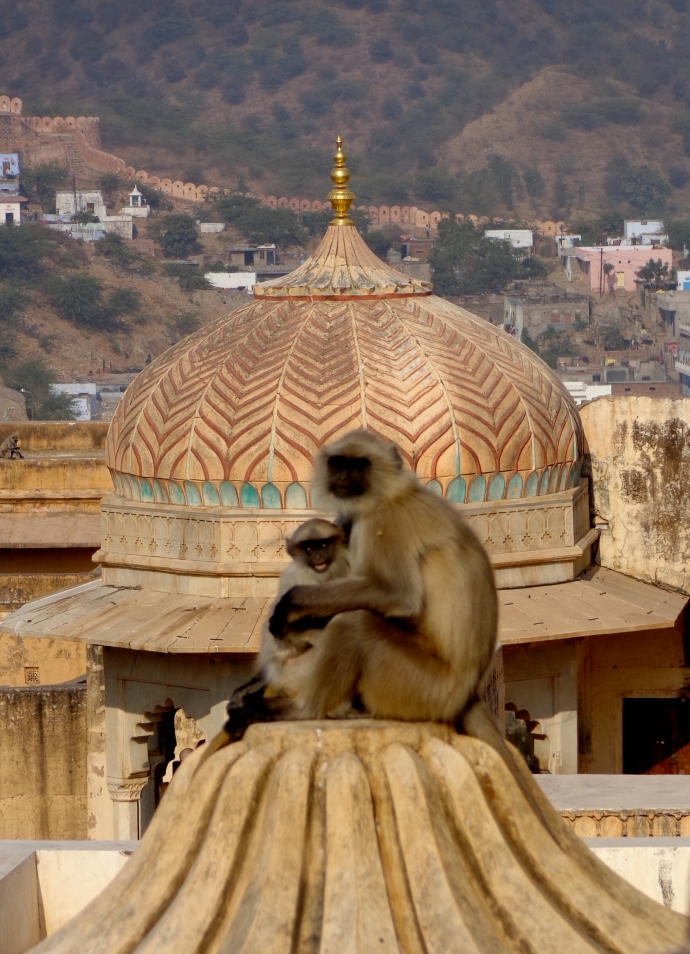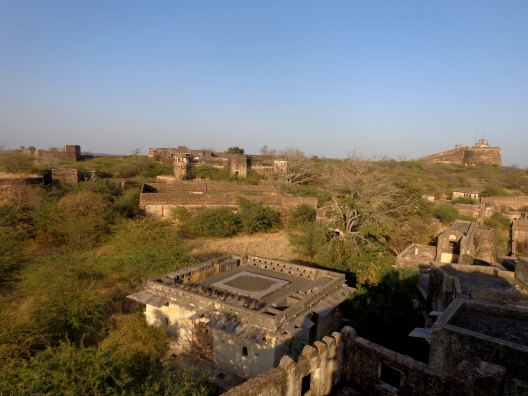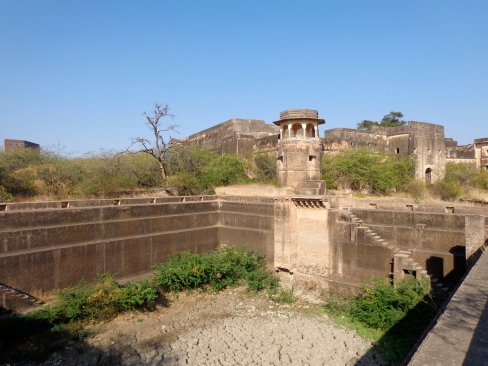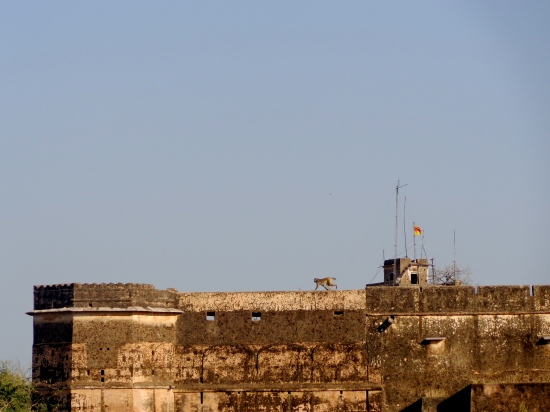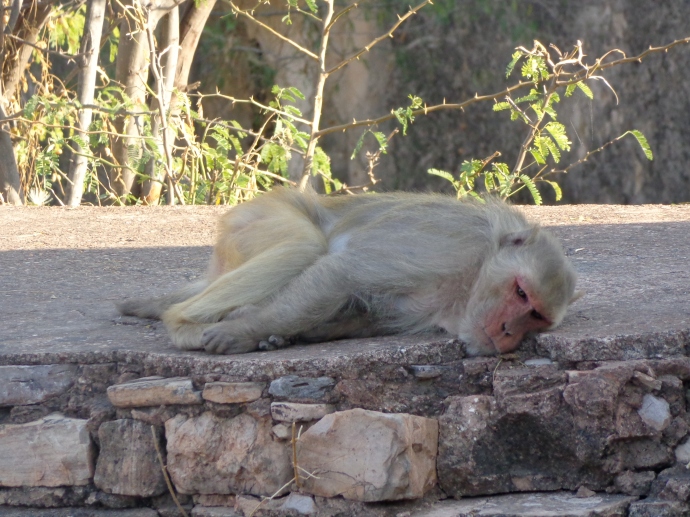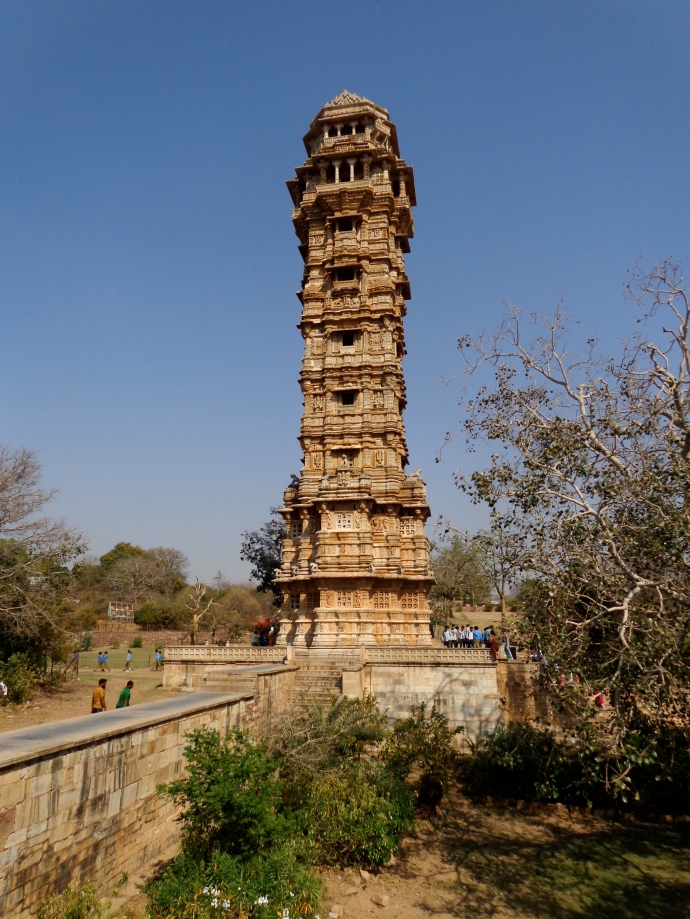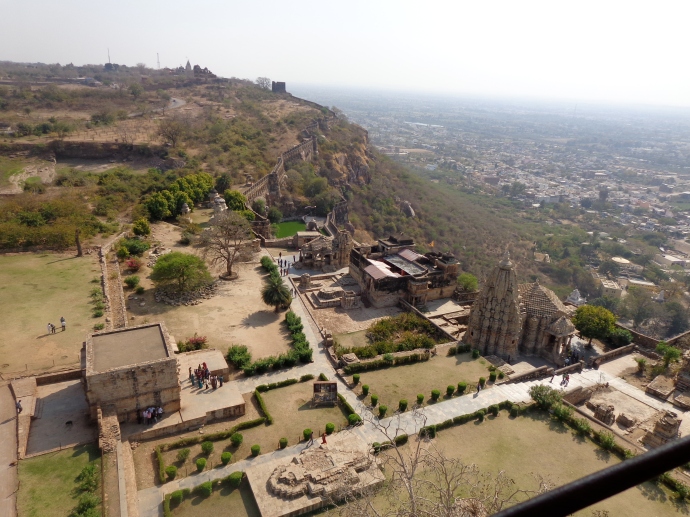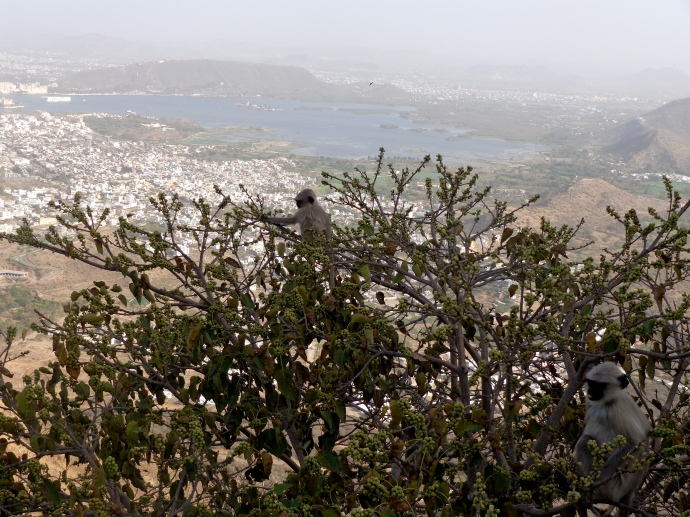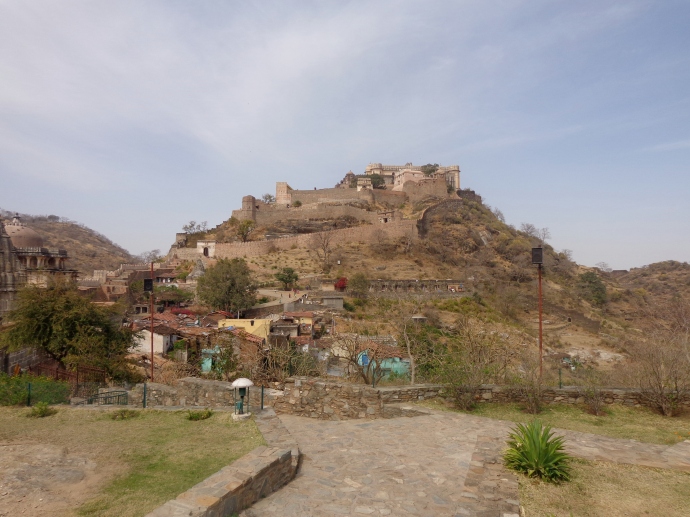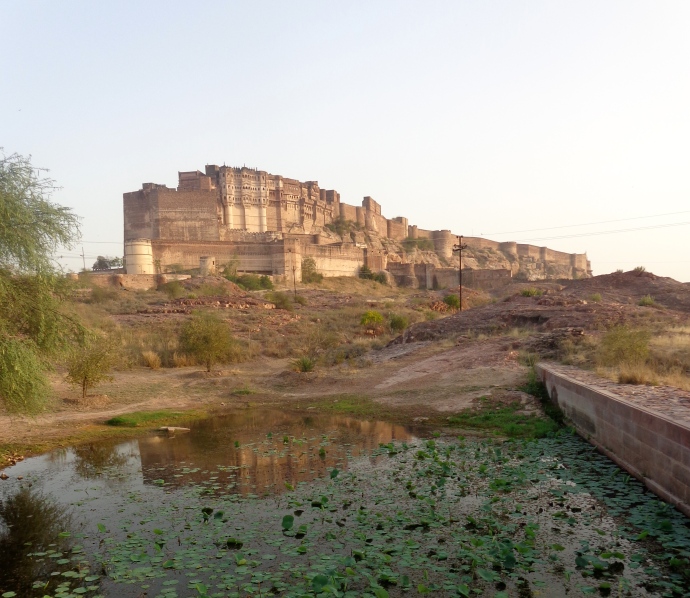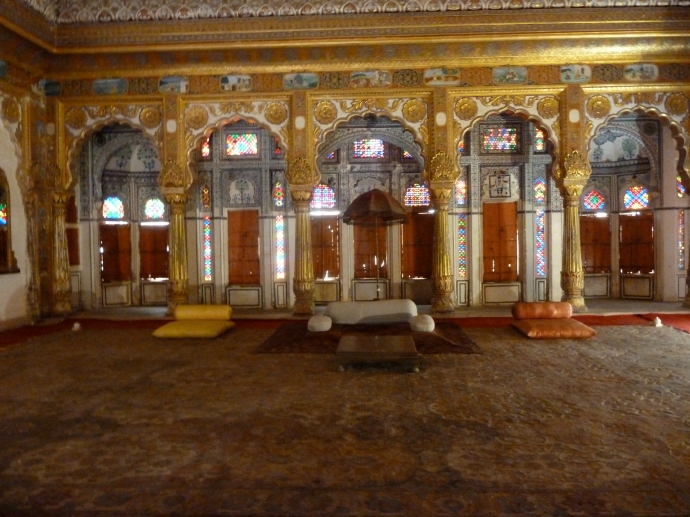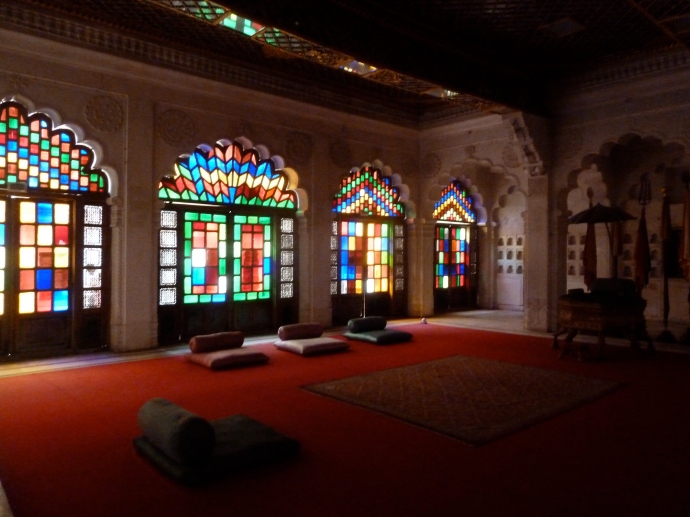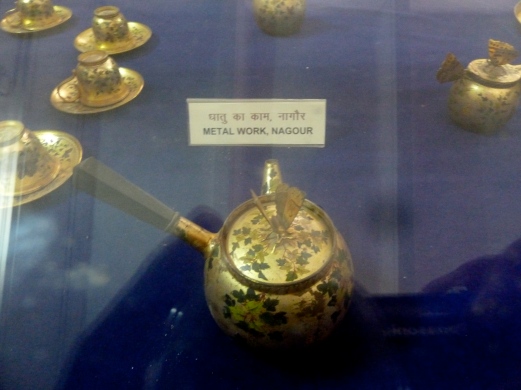Most foreigners who visit Rajasthan don’t come on employment visas. They come as tourists, eager to see the state’s renowned forts and palaces. Because I’m one of the few foreigners actually working here, I don’t have much time for typical Rajasthan tour, which involves traveling from place to place and viewing monuments ad nauseum. Most of the trips that I’ve written about on this blog have been weekend excursions to a single city. However, all of that changed recently when my parents and brother came to visit. They were complete, 100-percent tourists, and for a couple weeks, I was a tourist with them. For me, “tourist” sometimes seems like a dirty word; it brings up images of clueless, camera-clad white people in culturally inappropriate clothing who wander around with no idea what’s going on. A tourist is the last thing I want to be. But sometimes I am one, and there’s no avoiding it without staying home.
The best way to describe what it’s like to go sightseeing in Rajasthan is to share one simple fact: during my family’s visit, we visited a fort every day for nine straight days. These nine forts represent a variety of different styles, displaying the rich and colorful history of Rajasthan. I should note that the first three are in Delhi and Agra, which aren’t part Rajasthan but are often included in the same itinerary.
Day One: Old Fort, Delhi
The main thing you need to know about Old Fort is right there in the name. It’s really old. According to rumors, there have been fortifications on the site for over 5000 years, and archaeological excavations have unearthed artifacts dating back to 1000 BCE. Most of the fort’s current structures were built in the 16th century by the Mughal Emperor Humayun, and by Sher Khan, who defeated Humayun in 1540 and founded the short-lived Sur Dynasty. The fort is laid out in the typical Mughal style, with high, straight walls around smaller sandstone and marble buildings on a grassy lawn. The interior feels more like a park than a military installation, and it would make a nice picnic spot.
Day Two: Red Fort, Delhi
Delhi does a good job of labeling its forts by their most prominent characteristics. A wall of red sandstone surrounds Red Fort, which is Old Delhi’s most distinguishing landmark. It was constructed in the 17th century by the Mughal Emperor Shah Jahan, who is best known for commissioning the Taj Mahal in honor of his late wife. The fort was the centerpiece of his new capital, an incarnation of Delhi that he humbly called Shahjahanbad. Red Fort is better preserved than Old Fort and generally better looking. Shah Jahan’s reign is often considered the pinnacle of Mughal architecture. The fort has ornately carved marble buildings, and a four-sectioned symmetrical garden (known as a charbagh) with shade and fountains.
Day Three: Agra Fort, Agra
Agra Fort is so similar to Red Fort that a taxi driver once tried to convince us it wasn’t worth seeing. It has the same sort of red sandstone wall around symmetrical marble and sandstone structures. However, Agra Fort has a distinct advantage—a stunning view of the Taj Mahal. Often this view distracts from the fort itself. Agra Fort existed throughout the Mughal era, but it was renovated by Emperor Akbar in the 16th century and then again by Emperor Shah Jahan in the 17th century. After Shah Jahan’s son imprisoned him in the fort, the former emperor was kept in a tower where he could spend every day gazing at the Taj Mahal, which was not only his most famous accomplishment but also the tomb of his beloved wife.
Day Four: Amer Fort, Jaipur
Amer Fort serves as an effective transition from Mughal to Rajput architecture. Of all of the Rajput rulers, those from what is now Jaipur shared the closest alliance with the Mughals, and that connection heavily influenced their style of building. Constructed in the 16th century by Maharaja Man Singh I, who was so close to Emperor Akbar that he commanded the Mughal Army, the fort has many Mughal features, such as large, open courtyards and pillared halls of private and public audience. Many tourists, especially foreigners, choose to ride elephants up the zigzagging path to the fort’s main entrance.
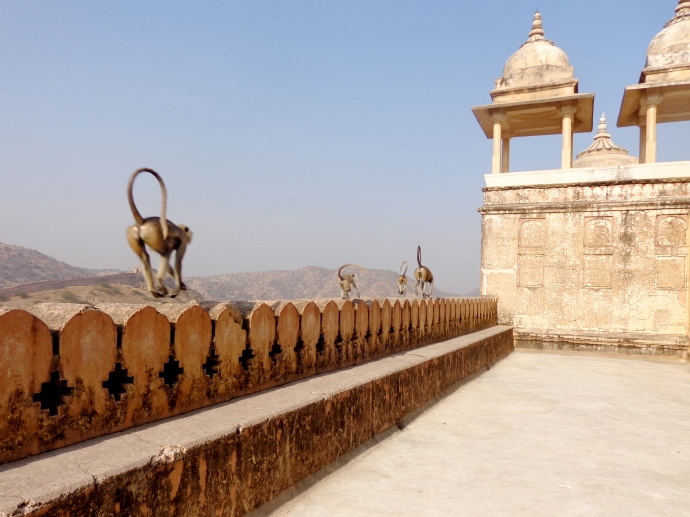
More monkeys
Day Five: Taragarh, Bundi
Bundi is one of India’s hidden gems, especially compared to the bustling Golden Triangle of Delhi, Agra, and Jaipur. For most of the time my family and I spent at Taragarh, which sits on a hill above the city, we were the only people up there. The lack of tourist traffic correlates with a lack of upkeep, but the fort’s decaying nature adds to the excitement of exploring it. Troops of rhesus macaques wander through the overgrown, dilapidated buildings and drink from the mostly dried-up step wells. Because there are so few people, the monkeys aren’t very aggressive and don’t normally harass you for food, but just to be safe, a stand at the bottom of the hill provides sticks for fending them off. Unlike the other forts we visited, Taragarh has no informative placards, so I’m not sure when or why it was built. A visit to the fort is more of an adventure than an educational experience. And the view from the top is spectacular.
Day Six: Chittorgarh, Chittorgarh
Chittorgarh, the largest fort in India, occupies an entire plateau above a flat plain. It’s so large that it comprises its own city, and over 4,000 people live within the original walls. Built in the 7th century, it eventually became the capital of Mewar kingdom. The fort was taken three times in its history, and each time, the inhabitants carried out the gruesome Rajput tradition of jauhar, in which the men rode into battles that they had no hope of winning while the women and children burned themselves to death in order to avoid dishonor at the hands of the enemy. After the last defeat, brought on by the Mughal Emperor Akbar and Maharaja Man Singh I of Amer, Chittorgarh was abandoned, and the capital of the Mewar kingdom eventually shifted to Udaipur. Even though the fort is primarily known for defeat, its predominant landmark is called Vijay Stambha, the Tower of Victory. It’s an intricately carved column built by Maharana Kumbha of Mewar. Visitors can climb to the top for a scenic view of the city and the countryside below.
Day Seven: Sajjangarh, Udaipur
Sajjangarh, also known as the monsoon palace, was the fortified mountain retreat of the rulers of Mewar, built by Maharana Sajjan Singh in the 19th century. Even though it wasn’t used explicitly for military purposes, its name has the suffix “garh,” so I’ll still count it as a fort. The structure is mostly empty these days, but it provides an excellent view of Udaipur’s lakes and mountains. It also gets points for serving as the lair of a Bond villain in the movie Octopussy.
Day Eight: Kumbhalgarh, Rajsamand
The ancient Mewar kindgdom had a thing for hilltop forts with striking views. Built by Maharana Kumbha in the 15th century, Kumbhalgarh sits on a remote peak in the Aravali Range. Its 36-kilometer outer wall, which snakes over the nearby hills, is supposedly the world’s second largest fortification, after the Great Wall of China. The fort area contains hundreds of temples and a lot of rugged terrain for exploring.
Day Nine: Mehrangarh, Jodhpur
A trip to Rajasthan can easily lead to fort fatigue, but Mehrangarh is an instant cure. It towers over the blue houses of Jodhpur’s old city, emerging grandly and seamlessly from the earth below. Hands down, it’s the best fort I’ve seen in India, although living in Jodhpur might make me a bit biased. At least TIME Magazine agrees with me. They named it Asia’s Best Fortress in 2007. Within its imposing exterior, Mehrangarh contains well-preserved interior palaces with intricate stone latticework, and the fort museum is clear and organized, a rarity in India. Built by Jodhpur’s namesake Rao Jodha in 1459 and improved by subsequent Maharajas, the stronghold has never been forcibly overcome.
Bringing my family there made for a suitable end to our trip. For the last several months, Mehrangarh has been a constant presence in my life. Every building in Jodhpur has an accessible rooftop, and every rooftop has a view of the fort. It forms a constant backdrop for my experiences, both my outings as a tourist and, more frequently, my daily pursuits as a working resident.

